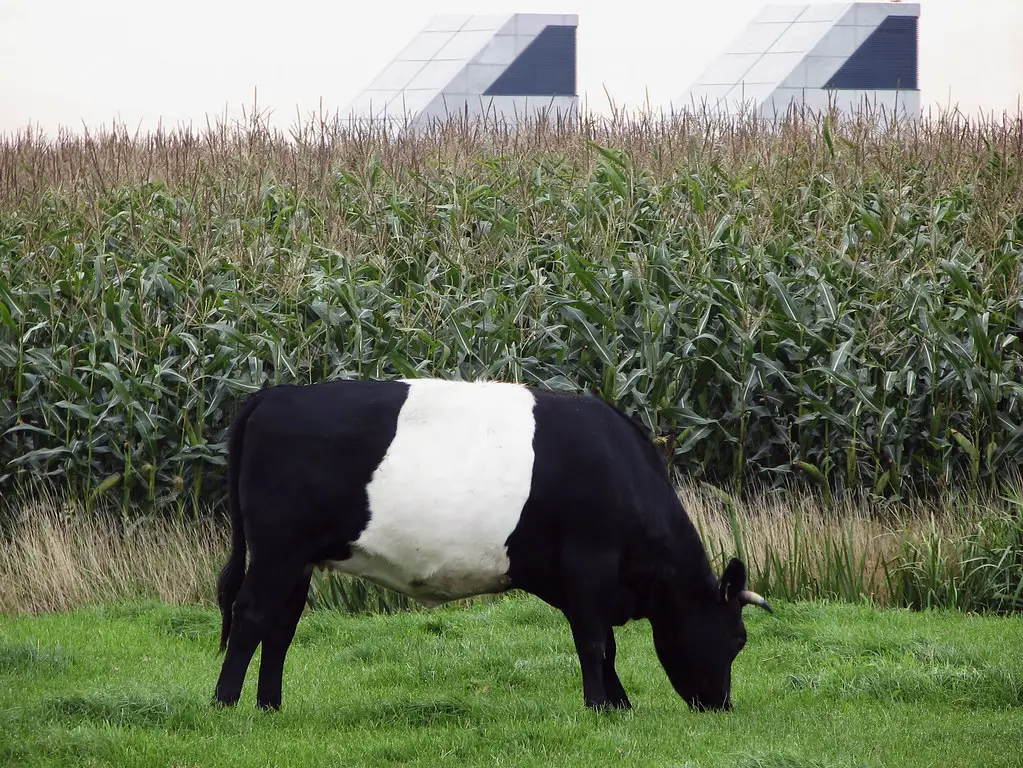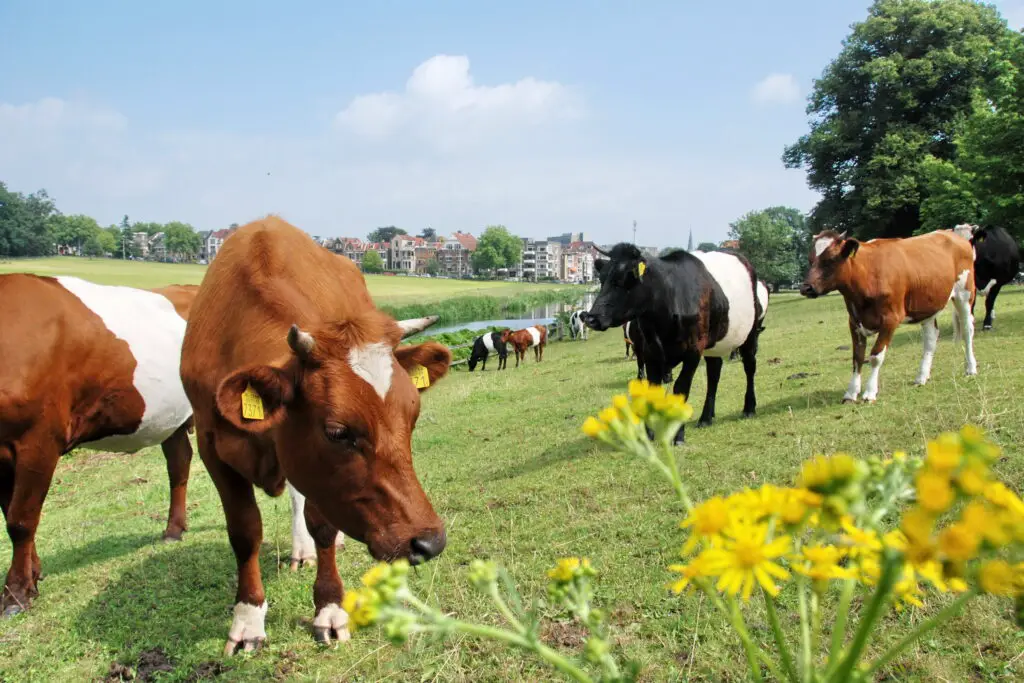
Picture a classic black and white Holstein cow, but with a twist. Imagine a perfectly smooth, snow-white belt wrapped around its middle. That’s the eye-catching trademark of the Dutch Belted cow – a rare and beautiful breed with a history as rich as its milk. If you’re searching for something a little different for your homestead or dairy operation, these gentle giants might just be the perfect fit. Let’s explore their history, characteristics, and what makes them both appealing and a bit challenging to raise.
Origin
The Dutch Belted cow’s story begins in the rolling hills of the Netherlands way back in the 17th century. Prized by Dutch nobility, these strikingly patterned cows were a symbol of status. They were carefully bred for their unique looks and rich milk, becoming a popular dairy breed throughout Europe. However, as agriculture modernized, their numbers dwindled.
Dutch Belted Cow Characteristics
- The Iconic Belt: Of course, the Dutch Belted’s most defining feature is that unmistakable white belt. It should wrap smoothly around the cow’s midsection, making them look like they’re wearing an old-fashioned tuxedo. Some belts are a bit narrower, while others can appear quite wide.
- Mid-sized and Docile: Dutch Belted cows fall in the mid-size range for dairy breeds. Cows typically weigh between 900-1500 pounds, while bulls are larger, reaching up to 2000 pounds. These cows are known for their calm, friendly personalities, making them easy to handle.
Pros of Raising Dutch Belted Cows
- Delicious, High-Quality Milk: While they might not produce as much milk as a Holstein, a Dutch Belted’s milk boasts a higher butterfat content, meaning it’s richer and creamier. This makes it ideal for cheesemaking, butter, and simply enjoying a delicious glass of fresh milk.
- Grazing Champs: Dutch Belted cows are excellent grazers, thriving in pasture-based systems. They are a good choice for organic or sustainable farms.
- Hardy and Adaptable: This breed is known for its hardiness, able to handle a range of climates and environments.
- Uniqueness Factor: Let’s face it; they’re downright charming! Their striking looks and gentle nature make them a unique and appealing livestock choice, especially for homesteaders or those targeting niche markets.
Cons of Raising Dutch Belted Cows
- Rarity: As a heritage breed, Dutch Belted cows are relatively rare. Finding breeding stock can be challenging and might require some travel.
- Sometimes, Lower Production: Compared to highly specialized dairy breeds, Dutch Belted cows may sometimes produce a bit less milk. This needs to be factored in for larger dairy operations.
Characteristics Table
Here’s a quick comparison to help visualize the Dutch Belted:
| Characteristic | Dutch Belted Cow |
|---|---|
| Size | Cows: 900-1500 lbs, Bulls: up to 2000 lbs |
| Milk Production | Moderate, but high butterfat |
| Temperament | Docile and friendly |
| Climate Adaptability | Hardy in various climates |
Dutch Belted vs. Belted Galloway
People sometimes confuse Dutch Belted cows with Belted Galloways, but there’s a key difference: purpose. Dutch Belted are dairy cows, while “Belties” are a beef breed. Belted Galloways are stockier with distinctive shaggy coats, while Dutch Belted are sleeker with that signature smooth belt.
FAQ Let’s tackle some common questions:
- What are Dutch Belted cows used for? Primarily dairy, though some are used for beef. They can also be great for crossbreeding to add their unique belt pattern to other breeds.
- Why is the Dutch Belted cow a rare breed? They faced competition from high-production dairy breeds during the 20th century.
- What is the difference between Belted Galloway and Dutch Belted? Dairy vs. beef, along with differences in build and coat texture. … (We’ll address the A1/A2 milk questions in the next section)
Absolutely, here’s the continuation of the blog post:
A1 vs. A2 Milk: The Dutch Belted Connection
You might have heard the terms A1 and A2 milk popping up lately. It’s a hot topic! Here’s the deal: some cows naturally produce milk with the A2 beta-casein protein, while others produce A1. There’s ongoing research about whether A2 milk is potentially easier to digest for some people.
Where does the Dutch Belted fit in? Some Dutch Belted cows do produce A2 milk, making their milk particularly appealing to certain consumers. However, not all Dutch Belted cows carry the A2 trait, so testing is necessary if you plan to market your milk as A2.
- Are Dutch cows A1 or A2? It depends on the cow! Both A1 and A2 can occur in most breeds, including Dutch breeds.
- Which cow is best for A2 milk? Jersey and Guernsey breeds have high percentages of cows with the A2 gene. Specific bloodlines within other breeds may also have a higher frequency of A2 producers.

Conclusion
So, are Dutch Belted cows right for you? If you’re looking for a unique, beautiful dairy breed with a gentle nature and delicious milk, they could be a fantastic option. Here’s what to consider:
- Your Goals: Are you a homesteader or niche dairy producer? Or do you need cows with maximum milk production for a large-scale operation? Dutch Belted cows shine in smaller, sustainable settings where their milk quality and charm are valuable.
- Rarity: Are you up for some detective work to find breeding stock? Be prepared to connect with breeders’ associations and possibly travel a bit.
- A2 Milk Potential: If you’re targeting customers interested in A2 milk, testing your herd will be essential.
The Dutch Belted cow is a piece of living history – a testament to the diversity and beauty of livestock heritage breeds. While they may not be the most common choice, there’s undeniably something special about these gentle, belted beauties.
